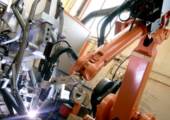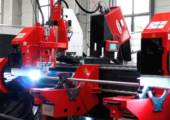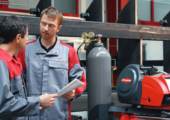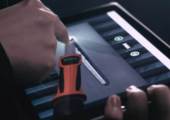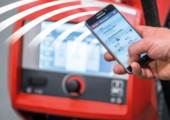-


在线留言
发送您的问题或需求,我们将尽快与您取得联系!
×
-
COMPLEMENTING, NOT REPLACING
HOW HUMAN BEINGS AND ROBOTS CAN WORK TOGETHER IN FUTURE
07/27/2020
Developments in robotics are rapidly forging ahead. The interplay between man and machine is no longer a vision of the future, but has instead become reality in many aspects of our private and working lives – including welding technology. But how do robots have to be designed so that we, as human beings, will feel safe with them, be able to work with them, and will not perceive these autonomous helpers as a threat? We put this question to Professor Martina Mara, the first professor of robopsychology in the world, at the Johannes Kepler University in Linz.

Professor Mara, you call yourself a robopsychologist. What do you mean by that?
The term “robopsychology” originates from science fiction author Isaac Asimov. There is a psychologist for the robots in his stories. We adopted the name for our research here in Linz, albeit with a reversal in meaning. For me, it is not about the psyche of the robots, but about human well-being. We are in the middle of a technological transformation. It is therefore important to think about how we are going to shape an automated future in which as many people as possible will feel at ease.
In which aspects of life and work is the interaction between human beings and robots particularly relevant?
The main ones that have already found their way into our daily life are the virtual robots, the so-called bots: Alexa & co. are appearing in more and more of our living rooms, and we interact with them verbally. By contrast, most people have hardly any experience with physical robots – if you look beyond automatic vacuum cleaners and lawnmowers. But this is likely to change in the next ten to twenty years. There are a lot of developments, especially in robotic mobility – such as transport robots to carry bedding or food from A to B in hospitals or nursing homes. Driverless cars will also come – not yet, perhaps, but in the next five years.
There is currently a lot of discussion in the industry about “cobots”, or collaborative robots. What do you think about this development?
At the moment, there is still very little real collaboration between human beings and robots. Where industrial robots are being used, they mostly still work in safety cages and behind barrier tape. But now that sensor systems are better, it will be possible to work together more closely. I believe that it is the mutual understanding of human beings and robots that is especially important here. What does a cobot have to inform its human team partner about, and when does it have to do it? How does it have to behave so that the human being feels safe and not too dominated, for example? I think that some people will be able to deal better with proactive robots, whereas others might prefer a reticent robot that basically just responds to commands. Cobots must also be designed for different expert levels: Someone who has yet to have any dealings with robots has quite different needs when interacting with the machine than someone who is used to it, or who already knows a lot about robotics.
Many people are quite critical about the increased use of robots. In your opinion, how are we going to increase acceptance of the new technology?
Human beings and robots should basically complement each other’s strengths; a robot should not copy the human being. Public discourse often focuses on humanoid and android robots, a unified being that threatens to replace humankind. I think that the media often paint a misleading picture and create false anxiety. It is important here to counteract this and provide a basis for dealing with the issue constructively. There are also many terms and concepts that are not properly explained. As a result, many people lack a basic understanding – which makes this really important. Everyone should be able to take part in a mature discussion about how these technologies will shape our future. All in all, I think that it is important to create a people-centered future with robots: robots can relieve the burden on us by taking on arduous, monotonous, and other tedious tasks. If the basic conditions are right, this can result in a better quality of life for us all.
Prof. Martina Mara,
and has been Professor of Robopsychology at the Johannes Kepler University in Linz since April 2018. She earned her doctorate with a dissertation on humanoid robots at the University of Koblenz- Landau and worked for many years at the Ars Electronica Futurelab, focusing on industrial and interdisciplinary research cooperation projects. Mara is a member of the Austrian Council for Robotics and Artificial Intelligence, and a board member of the Ludwig Boltzmann Society. She is a newspaper columnist who writes for a wide audience, regularly commenting on what is going on in the world of technology. In 2018, she received the BAWAG Women’s Prize and the Futurezone Award in the category “Women in Tech.”
-


 下载
下载
 会员中心
会员中心



 收起
收起

